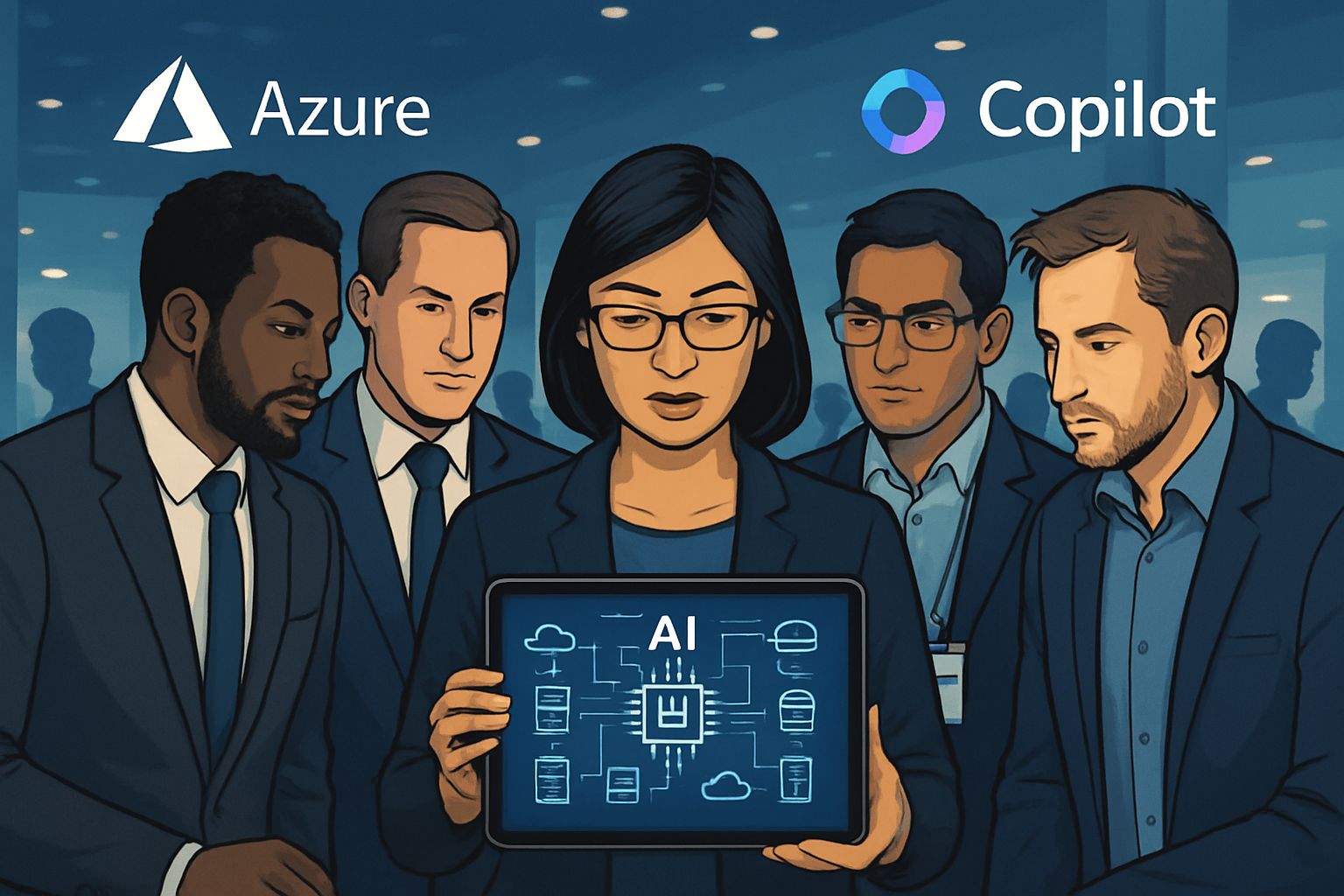
AI CERTS
4 hours ago
Microsoft Ignite reshapes enterprise AI infrastructure roadmap
In contrast, competitors question whether agents can deliver reliable outcomes at scale. Moreover, regulators scrutinize datacenter energy footprints as deployments multiply. Therefore, balancing ambition with responsibility defines the next phase of enterprise adoption. Throughout the discussion, the term enterprise AI infrastructure will appear frequently, reflecting its centrality. Read on for a concise yet comprehensive guide.
Ignite Sets Strategic Stage
Microsoft placed Azure AI Foundry at the center of its story. Furthermore, the firm rebranded its studio tools, combining model catalogs, SDKs, and governance dashboards. Satya Nadella framed agentic systems as the next productivity wave. Subsequently, Copilot Studio gained Agent Service extensions that enable autonomous workflows. These moves form the first pillar of the modern enterprise AI infrastructure vision.

Key announcements included serverless GPU support for Azure Container Apps and wider hybrid deployment options. Moreover, Jessica Hawk stated, “We’re excited to unveil Foundry as a unified application platform.” Her comment underscored Microsoft’s goal to reduce integration friction. Nevertheless, skeptics like Salesforce’s Marc Benioff warned of accuracy and data leakage concerns.
Ignite provided blueprints rather than final answers. However, the blueprints matter because they align hardware plans with software experiences. These highlights summarize the strategic context. Consequently, the narrative now shifts to hardware scale.
Hardware Scale Accelerates Rapidly
Since Ignite, Azure has deployed massive NVL72 clusters featuring 4,608 Blackwell GB300 GPUs. Tom’s Hardware reported exaFLOPS-class inference performance, though independent benchmarks remain limited. Additionally, liquid cooling and advanced networking support these fleets. Such datacenter buildouts illustrate Microsoft’s capital intensity and ambition. The developments also drive competition among hyperscalers.
Microsoft’s custom Maia accelerators and Cobalt CPUs complement NVIDIA hardware. In contrast, AMD MI300 options broaden silicon choice for customers. Consequently, enterprises can tune price-performance strategies across workloads. Moreover, serverless GPU consumption models lower entry barriers for smaller teams.
- 4,608 GPU NVL72 cluster claimed 1.44 exaFLOPS FP4 inference.
- Mordor Intelligence pegs the AI infrastructure market at USD 87.6 B in 2025.
- Projected market growth reaches USD 197.6 B by 2030 at 17.7 % CAGR.
These numbers demonstrate rapid scale and demand. However, physical expansion raises sustainability questions. Therefore, governance features must evolve alongside hardware growth. The next section reviews tooling that addresses those concerns.
Unified Tooling Drives Adoption
Azure AI updates landed quickly after Ignite. Foundry now integrates MongoDB Atlas, Kore.ai agent frameworks, and NVIDIA NIM microservices. Moreover, Copilot enhancements span prompt orchestration, memory management, and plugin catalogs. Microsoft claims tens of thousands of customers already use Foundry, though figures are vendor-reported.
Governance sits within the same portal. Azure AI Reports generate model cards, risk scores, and lineage graphs. Additionally, integrated HSM services protect secrets and credentials. Consequently, enterprises gain a single pane for building, deploying, and auditing GenAI workloads.
The convergence of dev-tools and compliance tooling accelerates adoption. Nevertheless, lock-in remains a real concern. These adoption forces feed into broader trust debates, explored next.
Governance Tackles Trust Gaps
Regulators worldwide demand transparency, accuracy, and robust security updates. Microsoft answers with Copilot Trust Layer, red-teaming pipelines, and automated policy checks. Furthermore, Azure AI Reports document model behavior over time, aiding audit readiness. Such capabilities strengthen enterprise AI infrastructure governance posture.
However, critics note that hallucinations persist despite safeguards. Benioff’s comments highlight market anxiety. Moreover, cost per token increases when additional guardrails run, complicating ROI models. Consequently, balanced strategies weigh safety against budget.
These safeguards reduce risk but do not eliminate it. Therefore, leaders must complement tooling with human oversight. The market section elaborates on economic pressures.
Market Trends And Outlook
Mordor Intelligence and GlobeNewswire both forecast double-digit growth for enterprise AI infrastructure spending. Additionally, surveys indicate 70 % of firms experiment with GenAI, yet only 30 % feel production-ready. Meanwhile, energy costs rise as datacenter buildouts continue worldwide. In contrast, vendors tout efficiency gains from custom silicon and liquid cooling.
Analysts warn that ROI hinges on data readiness and talent availability. Moreover, Gartner notes that governance maturity lags model experimentation. Consequently, training programs and certifications grow in importance. Professionals can enhance their expertise with the AI Cloud Architect™ certification.
The numbers confirm momentum and caution alike. However, economic headwinds may slow discretionary spending. The next section considers cost and sustainability tradeoffs.
Balancing Costs And Sustainability
Large language models require vast power budgets. Furthermore, cooling innovations offset, yet do not negate, rising emissions. Microsoft invests in renewable energy contracts, but grid pressure persists. Consequently, many boards now mandate sustainability metrics alongside financial ones.
Serverless GPU billing improves utilization, reducing idle wattage. Additionally, workload placement across regions lowers latency and optimizes energy profiles. Nevertheless, intense graphics workloads remain expensive. Decision makers must align budgets, carbon goals, and security updates in one strategy.
Cost controls and green targets intertwine tightly. Therefore, disciplined planning becomes a competitive advantage. The final section outlines concrete next steps.
Action Steps For Leaders
Executives should inventory existing AI projects, mapping them to the new toolchain. Moreover, conducting a pilot within Azure AI Foundry clarifies integration complexity. Subsequently, establish governance baselines using Azure AI Reports templates. Engaging finance teams early ensures transparent cost tracking. Additionally, prioritize skills: internal training or external courses accelerate readiness.
- Run a small agent pilot with Agent Service.
- Adopt serverless GPU for cost-controlled inference.
- Integrate security updates workflows into CI/CD pipelines.
- Pursue the AI Cloud Architect™ certification for key staff.
These steps build momentum while mitigating risk. Consequently, organizations can harness new capabilities responsibly.
Microsoft Ignite reshaped enterprise AI infrastructure narratives. Hardware scale, unified tooling, and deeper governance now define the competitive landscape. However, costs, sustainability, and trust remain pressing challenges. Moreover, market forecasts emphasize rapid spend growth, yet adoption gaps persist. Therefore, leaders must act decisively, balancing ambition with prudence. Explore certifications and continuous learning paths to prepare teams for the next wave of innovation.



